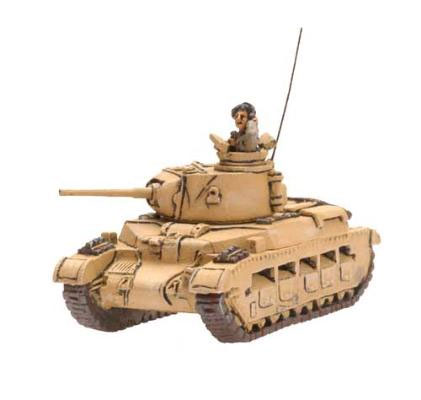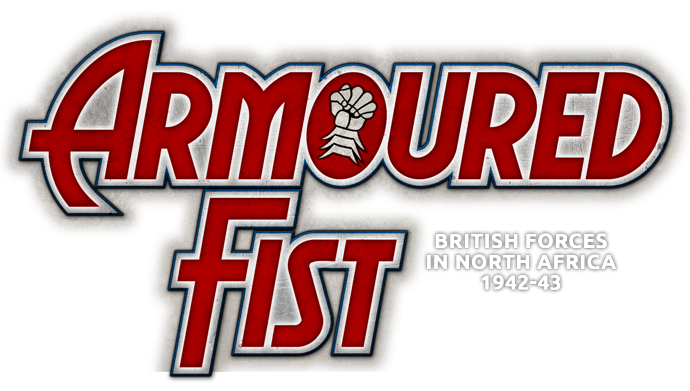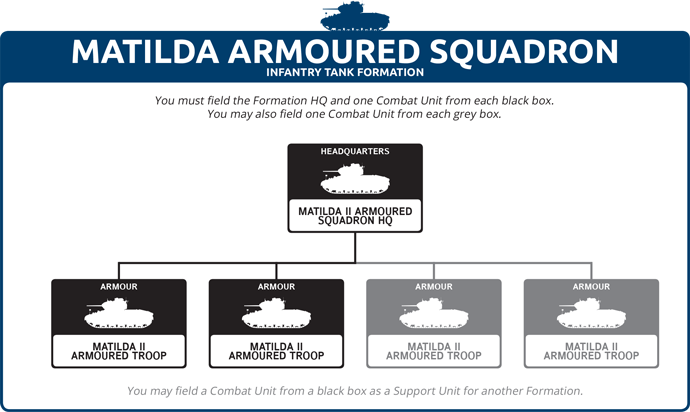
|
| |
|
|
|
|
 |
|
|
Matilda Tanks in the Desert
|

|
Matilda Tanks In The Desert
with Phil Yates
The Matilda infantry tank was the British Army’s most modern infantry-support tank at the start of the Second World War. When the Germans first encountered them during the Battle of France in 1940, they found them almost invulnerable to their tank and anti-tank guns. Only their 8.8cm heavy anti-aircraft guns could stop them. Later that year, the Matilda had another opportunity to show its strengths when they successfully lead the British attacks on Italian fortified positions in Operation Compass.
|
Armoured Fist
The British Army has the Italian-German armies in Africa caught in a vice, and are steadily screwing the jaws shut. The Eighth Army is advancing from El Alamein in the east, while the First Army fights its way through Tunisia from the west. Their armoured divisions combine the dash of fast, light tanks like the Honey and Crusader, with the power of the heavy Grant and Sherman. Their infantry divisions have some of the toughest riflemen in the world, backed up by thickly-armoured Churchill and Valentine tanks and massed artillery. Together, they make up a force that can defeat anything the enemy brings against them, a force that will destroy the Axis forces in Africa.
Learn more about Armoured Fist here... |
 |
|
Unfortunately, this was the high point for the Matilda. Their next major attack, Operation Battleaxe in June 1941, ran into a prepared German defence with new 5cm anti-tank guns backed by their powerful 8.8cm anti-aircraft guns. Of the 100 Matilda tanks that attacked, 63 were disabled or knocked out on the first day. The thick armour that had protected them so far, was no longer impervious to the latest anti-tank weapons.
The Matilda soldiered on for another year, but never again enjoyed the success of its first battles.In Operation Crusader at the end of 1941, the Matilda tanks were given the role of mopping up the bypassed German and Italian defences after they had been heavily pounded by artillery. By the time of the Gazala battles in May 1942, there were just two battalions left, and being rather old and worn out, they took little part in the battle, suffering heavy casualties when they attacked, and the remains of both battalions were captured in Tobruk at the end of June, an ignominious end for a tank that was once the ‘Queen of Battle’.
|
|
Valentine Armoured Squadrons
One of the reasons for the demise of the Matilda tank was the rise of the Valentine tank. Designed as a cheaper and easier-to-produce infantry tank, the Valentine had the same gun as the Matilda, and almost as much armour. Once the Germans started fielding guns capable of penetrating the Matilda, any disadvantage that the Valentine had pretty much disappeared, while the ease of production and lower price made the Valentine much more attractive. By the time of the Gazala battles, the Valentine outnumbered the Matilda in the British infantry-support Army Tank Brigades.
Oddly, the one place that the Valentine could not compete with the Matilda was in the artillery support role. Whereas there was a Matilda CS (Close Support) version armed with a 3-inch howitzer, there was no Valentine equivalent. As a result, Valentine armoured squadrons initially had a pair of Matilda CS tanks in their HQ troop.
If you want to model your Valentine Armoured Squadron this way, you can field an HQ of one Valentine II and two Matilda CS tanks (see the Matilda Armoured Squadron HQ card below for the Matilda CS data) for 20 points instead of the standard HQ.
|
|
Matilda Unit Cards
The Matilda armoured squadrons were organised and equipped in the same way as the Valentine squadrons with an HQ and four troops of three tanks.
|
|

|
|
|
|